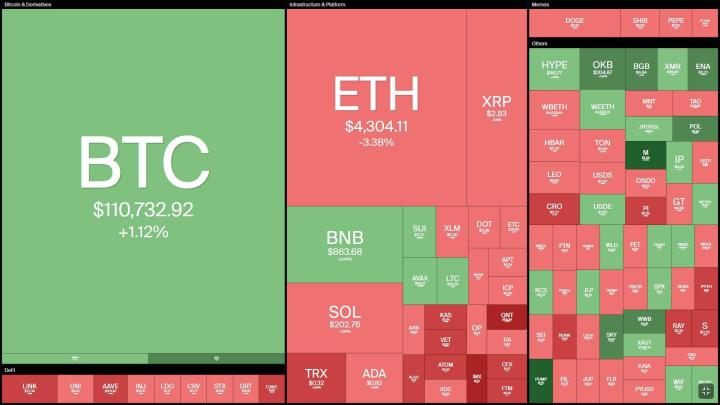Today, we'll delve into the core engine of mining—the mining algorithm. What is a mining algorithm? Why are Bitcoin, Dogecoin, and Litecoin mined in such different ways? How can a beginner choose the right mining algorithm for their needs? This article will explain these "digital gold rush" secrets in plain language, guiding you from the ground up into the world of algorithms!
01 What is the mining algorithm? The "mathematical code" of blockchain
The mining algorithm is the core rule of a cryptocurrency network, a complex set of mathematical instructions that guide miners in verifying transactions, generating new blocks, and maintaining blockchain security. Simply put, it's like a "super math problem" that requires computing power to solve. Miners who successfully solve the problem are rewarded with cryptocurrency (such as Bitcoin or Dogecoin).
> Metaphors of everyday life
Imagine the mining algorithm as a lock and the miner's hardware as the key. Bitcoin's lock (the cryptographic hash algorithm SHA-256) requires a super-powerful, specialized key (an ASIC mining machine). Different algorithms determine the tools you need, the cost, and the amount of "gold" you can earn.
> Core application of the algorithm
Verify transactions: Ensure that each transaction is legitimate and prevent double spend(spending the same money twice).
Generate blocks: Pack transactions into blocks and add them to the blockchain ledger.
Reward mechanism: Miners who successfully solve the puzzle receive new coins and transaction fees.
Network security: The complexity of the algorithm makes the cost of attacking the network extremely high, ensuring decentralization.
02 Why are there different mining algorithms?
Since the birth of Bitcoin in 2009, cryptocurrencies have developed rapidly, giving rise to a variety of mining algorithms. Why are there so many algorithms? There are three main reasons:
Hardware compatibility: Different algorithms have different hardware requirements. For example, SHA-256 is suitable for ASIC mining machines, while Scrypt and Ethash are more suitable for GPUs or CPUs, lowering the barrier to entry for ordinary people.
Decentralization and security: Algorithm design influences the concentration of computing power. ASIC-resistant algorithms (such as Scrypt) encourage more participation and prevent a small number of large mining farms from monopolizing the network.
Project Uniqueness: New algorithms can help projects stand out. For example, the Scrypt algorithm used by Dogecoin and Litecoin improves network security through merged mining, attracting more miners.
03 Analysis of mainstream mining algorithms: Bitcoin, Dogecoin, etc.
Currently, cryptocurrencies use a variety of mining algorithms, each with unique hardware requirements and mining experience. Below is a look at four common algorithms, focusing on Bitcoin's SHA-256 and Dogecoin/Litecoin's Scrypt, along with a brief overview of other algorithms.
1 SHA-256: Bitcoin's "Super Difficulty"
> Introduction
SHA-256 (Secure Hash Algorithm 256-bit) is the Proof-of-Work (PoW) algorithm used by Bitcoin and was designed by the U.S. National Security Agency (NSA). It requires miners to calculate a 256-bit hash value and find a result that meets the difficulty requirement (leading with multiple zeros).
> Features
High computing power requirements: The total network computing power in 2025 will be approximately 859.01EH/s (85.9 quadrillion hashes per second).
Specialized hardware: Requires an ASIC miner (device designed specifically for SHA-256).
Block time: about 10 minutes
> Applicable Currency
Bitcoin (BTC)
Bitcoin Cash (BCH)
> Advantages and Disadvantages
Advantages: Extremely secure, with high attack costs; Bitcoin enjoys high market recognition and relatively stable long-term value.
Disadvantages: ASIC mining machines are expensive and consume a lot of energy
> Suitable for people
Large professional miners or large mining farms with cheap electricity.
2 Scrypt: The "Newbie-Friendly" Algorithm for Dogecoin and Litecoin
> Introduction
Scrypt is a memory-intensive algorithm originally designed to be ASIC-resistant. It requires a large amount of memory to perform hashing operations, reducing the reliance on computing power.
> Features
High memory requirements: Compared to SHA-256, Scrypt relies more on memory than pure computing power.
Fast block time: about 2.5 minutes for Litecoin and about 1 minute for Dogecoin.
Merged Mining: Dogecoin can be mined simultaneously with Litecoin to increase returns.
> Applicable Currency
Litecoin (LTC)
Dogecoin (DOGE)
> Advantages and Disadvantages
Advantages: Low barrier to entry, GPUs are all that’s needed to participate; fast block generation and frequent returns; merged mining increases returns.
Disadvantages: ASICs are gradually entering Scrypt mining, GPU competitiveness is declining; coin prices are volatile.
> Suitable for people
Newbies on a budget, or those who want to try Dogecoin/Litecoin.
3. Ethash: Ethereum Classic’s “GPU Paradise”
> Introduction
Ethash is the PoW algorithm used by Ethereum Classic (ETC). It is designed to be memory-intensive and ASIC-resistant, and requires hashing a dynamic dataset (DAG, approximately 6GB).
> Features
Memory dependency: DAG size increases over time, reaching approximately 6-8 GB in 2025.
Hardware: GPU is the mainstream, ASIC is less efficient.
Block time: about 15 seconds.
> Applicable Currency
Ethereum Classic (ETC)
> Advantages and Disadvantages
Advantages: ASIC-resistant, suitable for GPU mining; highly decentralized.
Disadvantages: Lower returns, requires a high-performance GPU; DAG growth increases hardware requirements.
> Suitable for people
Players with high-performance graphics cards who want to try non-Bitcoin mining.
4 Introduction to other algorithms
Equihash (Zcash): Memory-intensive, ASIC-resistant, suitable for GPU mining, and privacy-focused.
RandomX (Monero): CPU-friendly, ASIC-resistant, encourages participation from ordinary computers, and maintains decentralization.
X11 (Dash): combines 11 hash functions, is energy-efficient and secure, and supports GPUs and specialized ASICs.
Chart: Comparison of mainstream mining algorithms

04 Future Trends in Mining Algorithms
The evolution of mining algorithms is not only constrained by technological progress but also driven by energy costs, environmental policies, and the concept of decentralization . Against the backdrop of accelerating global computing power deployment, iterative chip manufacturing technology, and a diversified blockchain ecosystem, future trends in mining algorithms are likely to take the following forms:
> More efficient algorithms and hardware adaptation
As chip manufacturing enters the 3nm and even 2nm process era, future mining algorithms will prioritize hardware performance and energy efficiency. New algorithms may reduce redundant computations without compromising security, improve hashrate per watt, extend hardware lifecycles, and reduce equipment depreciation.
> Anti-ASIC design and computing power distribution optimization
To prevent excessive concentration of computing power in large mining farms, more projects may adopt CPU- or GPU-friendly algorithms. For example, Monero’s RandomX algorithm can fully utilize the cache and instruction set of general-purpose processors, almost eliminating the advantages of ASICs.
Dynamic algorithms (such as periodic adjustments to hash functions or memory requirements) may also emerge in the future to suppress the economic feasibility of ASIC development, thereby allowing individual miners to participate for a longer period of time.
> Green mining and carbon neutrality goals
By 2024, approximately 54% of the world's Bitcoin computing power will use renewable energy (data source: Bitcoin Mining Council), but energy consumption is still criticized by the outside world.
The new algorithm may be more suitable for intermittent energy (such as wind and solar energy) and, combined with an intelligent scheduling system, automatically increase computing power when renewable energy is sufficient and reduce load during off-peak periods, thereby reducing carbon footprint and lowering electricity bills.
> The balance between PoW and PoS
Ethereum completed the "merger" and switched to PoS in September 2022, with annual power consumption dropping by more than 99.95%, attracting the attention of some projects to PoS.
However, PoW still has unique advantages in terms of security, trustlessness, and censorship resistance. Therefore, hybrid consensus models (such as PoW+PoS or PoW+PoA) may emerge in the future to balance decentralization and energy efficiency.
05 Choose the right "digital gold rush" password
Mining algorithms are the mathematical code of the cryptocurrency world, determining the threshold, costs, and returns of mining. Different algorithms have varying requirements for computing power, energy consumption, and hardware performance, which in turn impact mining profitability.
Bitcoin's SHA-256 algorithm attracts professional miners with its high security and high returns, but it requires expensive ASIC mining machines and low electricity prices, making it difficult for small and medium-sized miners to enter the market. The Scrypt algorithm used by Dogecoin and Litecoin offers a low-barrier "gold rush" opportunity for beginners, allowing them to get started with a GPU. Algorithms such as Ethash and RandomX are designed to be ASIC-resistant, helping to attract more participants and promote decentralization.
Whether challenging Bitcoin’s “super puzzle” or trying out Dogecoin’s “meme wealth,” understanding the mining algorithm is the first step to success.
Click here to learn about BlockBeats' BlockBeats job openings
Welcome to join the BlockBeats official community:
Telegram group: https://t.me/theblockbeats
Telegram group: https://t.me/BlockBeats_App
Official Twitter account: https://twitter.com/BlockBeatsAsia







